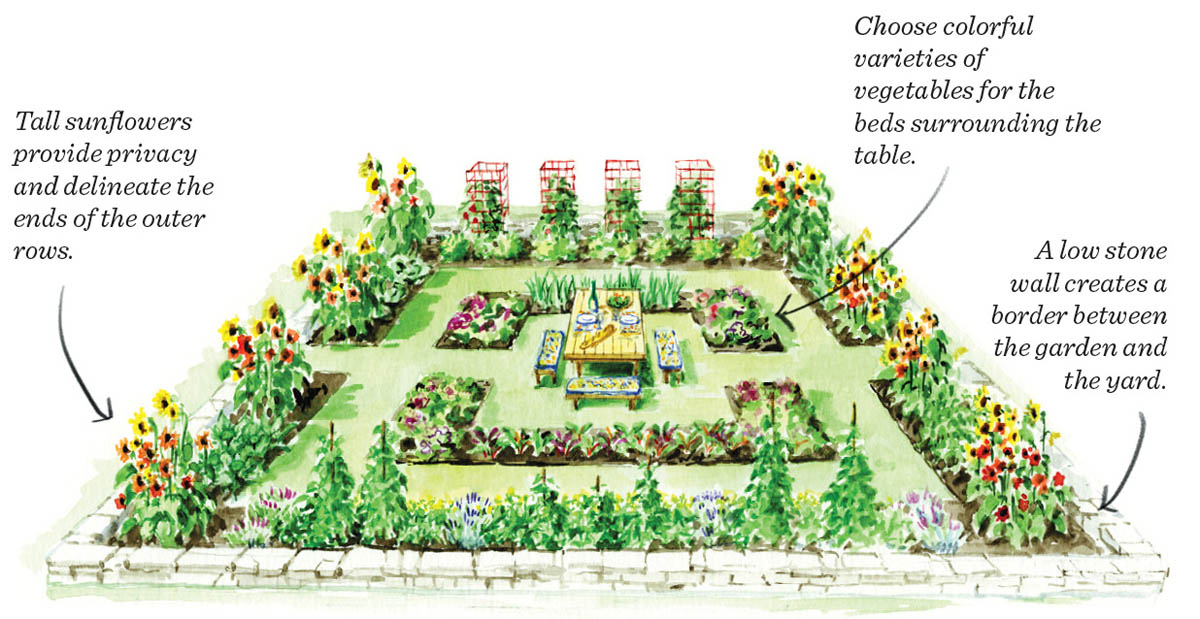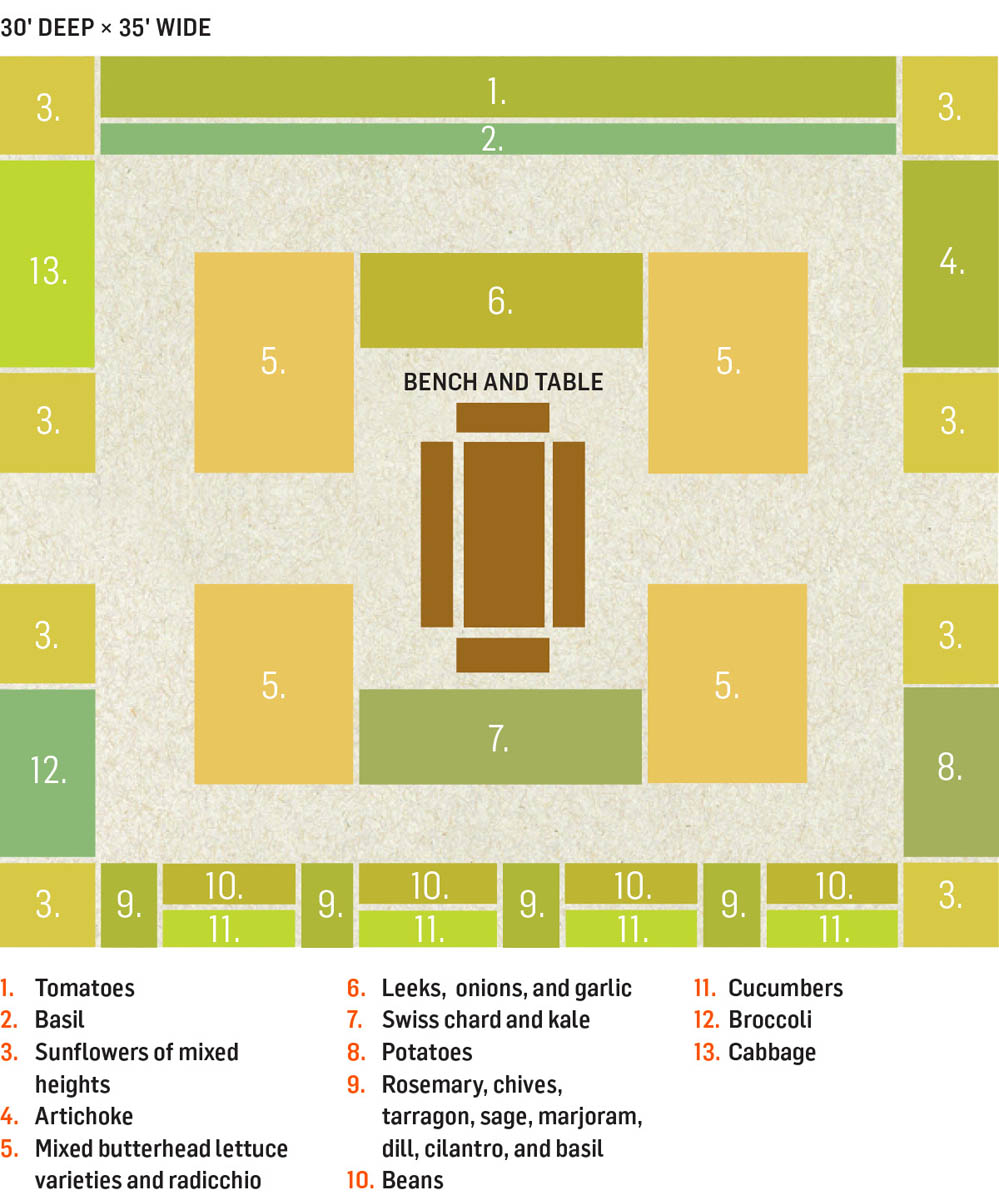
What better way to enjoy an alfresco meal of homegrown vegetables and herbs than with family and friends at a table in the heart of the garden? In her design, Ellen Ecker Ogden highlights the age-old connection between the garden and kitchen by planting the four formal beds with a carefully chosen selection of gourmet edibles and annual flowers.
Table as centerpiece. A passionate cook and gardener, Ellen believes that the garden and the kitchen go hand in hand. At the center of her design, she has a placed a table where homegrown food can be celebrated with family and friends. “Enjoying the magic that happens around the table with good food and friends is key to building connection, and what better place to do this but in the garden?” says Ellen. Even when the table is not used for eating, it’s a good place to sit and watch the birds and pollinators.
Ellen’s garden measures 30 feet long by 35 feet wide and is compact enough to fit comfortably within the boundaries of all but the smallest properties. The design has only four beds, but Ellen’s arrangement makes the garden a very productive space. The outside beds are a manageable 3-foot width, which allows easy planting, maintenance, and harvesting from the interior side of the garden. The two inner beds are a bit roomier, measuring from 3 to 6 feet wide, since they can be accessed from more than one side. For a clear separation from the lawn, Ellen suggests a border — such as a low stone wall, a split rail fence, or a boxwood hedge — around the perimeter of the garden.
Soil-level beds. Depending on the site and the whims of the gardener, the beds can be raised or left at ground level. Ellen admits that she prefers traditional soil-level beds. “Soil is key, and it’s important to add compost, plant cover crops, and work the earth — which is harder to do with a raised bed,” she says. She also finds that soil-level beds provide more flexibility when designing the shape and size of your garden plots. If building raised beds, use untreated, rot-resistant lumber such as cedar or hemlock; other options include stone, brick, or even low wattle fencing.
When choosing edibles for her garden, Ellen selects for flavor and ornamental value. She also picks her vegetables based on what she likes to cook and what is not available for purchase locally.
Select high-value plants. “The fruits and vegetables that I grow can’t always be bought at the market, or they cost a lot to buy organic,” she says. Another factor is the length of the harvest season — Ellen aims for a steady return from spring through late autumn. About 80 percent of her plants are her favorite, tried-and-true varieties, and the remaining 20 percent are new and different each year.
Arrange for color. Ellen also pays particular attention to how the plants she chooses are arranged. For the two beds that surround the table, Ellen has interplanted green butterhead lettuce with red radicchio, which (after being cut back) will produce purplish-red heads to take center stage once the lettuces mature and are harvested. In the center of one of these beds, ‘Bright Lights’ Swiss chard and dinosaur (‘Lacinato’) kale provide color and structure, as well as a steady supply of nutritious greens. She adds that most hearty greens can be grown practically year-round.

Clumps of small to medium-sized sunflowers such as ‘Autumn Beauty’ and ‘Valentine’ break the large outer beds into smaller planting plots. Between the cheerful sunflowers, tomatoes are supported on Texas-style cages and interplanted with ‘Sweet Genovese’ basil. Texas-style tomato cages are extremely sturdy wire supports that are 18 to 24 inches in diameter and up to 6 feet tall. Bush and pole beans, cucumbers, potatoes, cabbage, broccoli, and herbs fill the remainder of the beds. In front of the cucumbers, a low edge of ‘Lemon Gem’ signet marigolds adds a pop of color and provides edible blooms that add a hint of citrus to homegrown salads.

1. Tomatoes
2. Basil
3. Sunflowers of mixed heights
4. Artichoke
5. Mixed butterhead lettuce varieties and radicchio
6. Leeks, onions, and garlic
7. Swiss chard and kale
8. Potatoes
9. Rosemary, chives, tarragon, sage, marjoram, dill, cilantro, and basil
10. Beans
11. Cucumbers
12. Broccoli
13. Cabbage